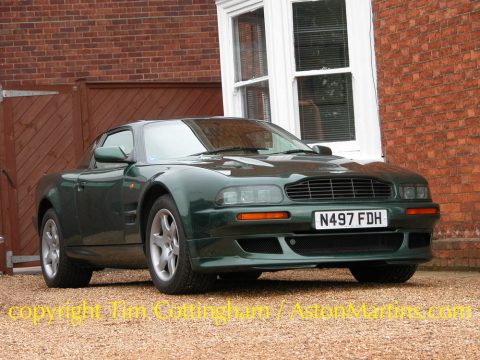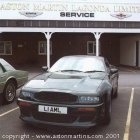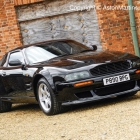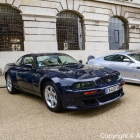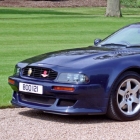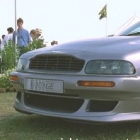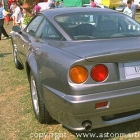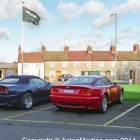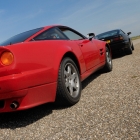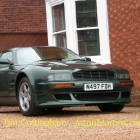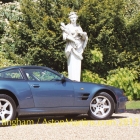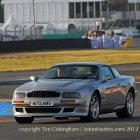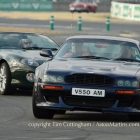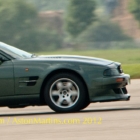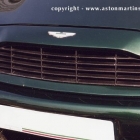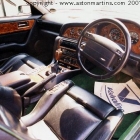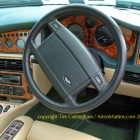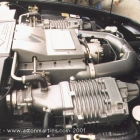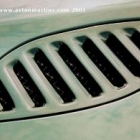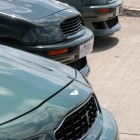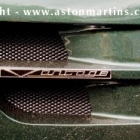Later variants were badged V8 Vantage which is even more confusing as then should not be confused with the first production V8 Vantage built between 1977 and 1989 or the current Gaydon produced car. Sometimes people also refer to this car as the Vantage S/C, V550 to reflect peak power or also, confusingly sometime V590, which refers to the engine prefix which also allows a distinction from the later v600. Also although many UK cars have Virage Vantage on their V5 document, this term should never be used when describing this model; it tends to upset the owners!
The front view of the Vantage reveals no fewer than six headlights. This trend for excess in the lighting dept was started with the DBS packing four. The Bulldog had five, centrally mounted, whereas the facelift V8 Lagonda was the first to have six. The earlier cars had square headlights (similar to the V8 Zagato) whereas from chassis 70113 they were replaced with round projector type also used on all examples of the V8 Coupe and long chassis V8 Volante. I believe since the square ones are now virtually unobtainable, if cars receive frontal damage affecting the headlamps, they tend to be rebuilt with the later round lights. Those wonderfully juicy grapefruit rear lights were specially designed and tooled for the car. It would have been better if the lights also incorporated a rear reflector instead if it being separate in the bumper, but this would have been too expensive for such a low volume car.
The massive 362 mm diameter ventilated discs and four piston AP Racing callipers fitted to the front of the Vantage were at the time, the largest fitted to a road car. They have their work cut out stopping car weighing in at 1990 kg.
The sumptuous yet functional interior of a Vantage, was much improved from the Virage including the replacement of the VIC computer with three, then four analogue dials. The keen eyed amongst you will see that the car illustrated below is an automatic. The factory only built the car with a six speed manual box, the small number of automatics have often been converted at Works Service.
Changes to the Virage based body may be extensive, but that’s nothing compared to the engine. Here we have a 5340cc V8 with not one but twin Eaton superchargers. With 550 bhp and 550 lb ft of torque, this was, at the time, the most powerful production powerplant in the world. In V600 form, as unveiled late in 1998, and additional 50bhp became available. With all this power, you now want to know “how fast”. Is 186 mph and 0-60 mph in 4.6 seconds enough? – well these are AML’s ‘official’ figures, although in testing, I believe a figure of almost 200mph was recorded. In its day, it was the the fastest Aston Martin road car ever. I was very fortunate to ride in a works Vantage in 1998, easily the fastest car I have ever been a passenger – including a Dodge Viper.
Cars from 70173 (plus 71) lost the Citroen CX sourced door mirrors and gained a newer Jaguar version; these cars also had a greatly revised exhaust system with transverse rear silencers. Cars with chassis number 70198 and above (inc 70194 received the flush Mondeo sourced door handles with integral keyholes, and an improved cooling system
By February 1998, production had topped the 200 mark during five years of production and by the time production ended, a mere 239 ‘standard’ examples had been produced – a very exclusive motorcar indeed. The remaining 40 supercharged Vantage coupes built during 1999 and 2000 were the Le Mans special editions. Once production of the handbuilt V8 ended in late 2000, the days of heavyweight coachbuilt Astons were over for good.



